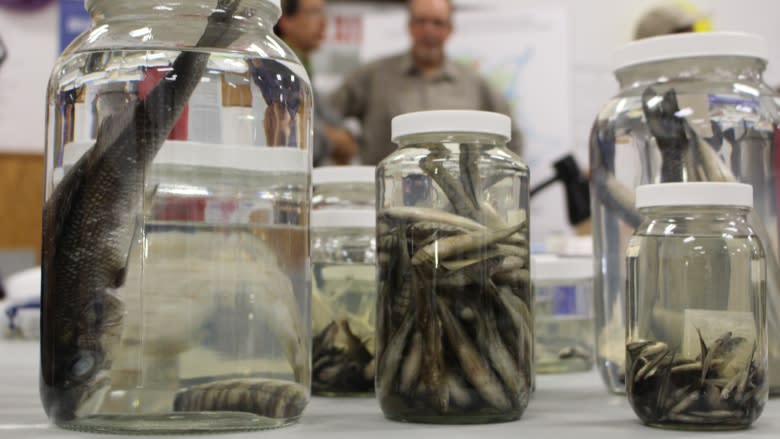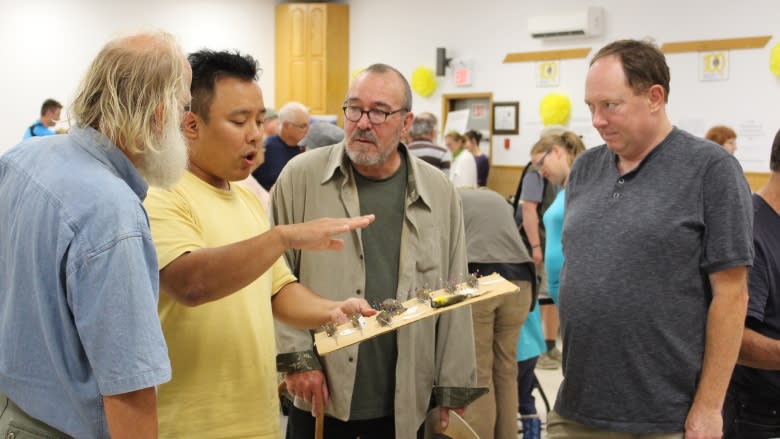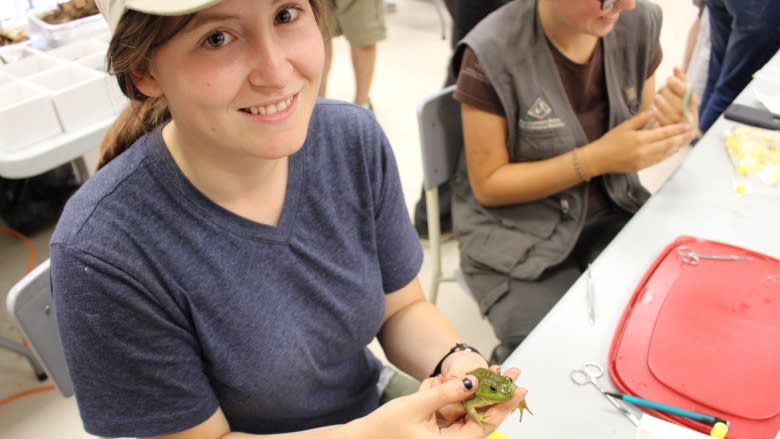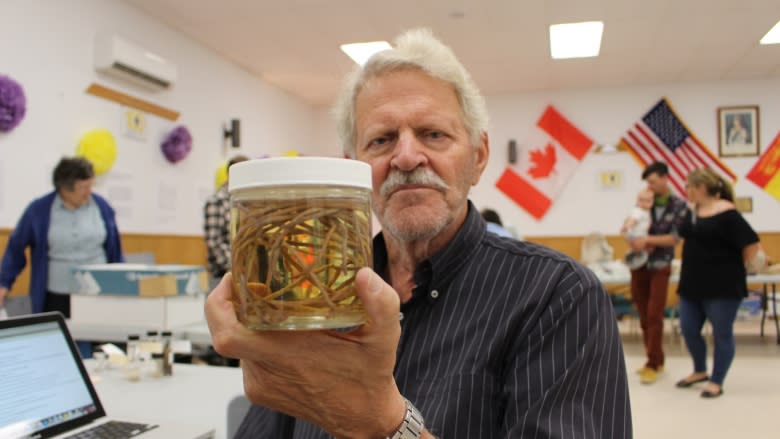No stone unturned: Biota NB uncovers new species
Researchers combing an area near McAdam for living things discovered what could be a new earthworm, as well as a type of dragonfly that hasn't been seen in the province in a century.
This is the ninth year the New Brunswick Museum hosted the Biota NB, a trip that documents the diversity of living things in the New Brunswick's protected areas.
This year, close to 70 participants from as far west as British Columbia and as far south as Texas gathered at Spednic Lake.
On Sunday, they held an open house to show what's been found so far.
"The project is really intended to try to assist the provincial government, the protected natural areas program, with the development of its management plans," said Don McAlpine, research curator of the zoology section, and head of the department of natural science at the New Brunswick Museum.
"If these areas are going to be protected in the long term, there's a very public component that people need to understand the importance of these sites. They need to develop a sense of stewardship for them."
New discoveries
The team has discovered new fungi and new lichens that have never been seen in Canada. Researchers also found some beetles and grasshoppers that weren't known to be in New Brunswick before.
One of the big finds for the crew this year was an earthworm.
"We've got a native species here that has never been found in this part of the province before," said John Reynolds, who has been working with earthworms for 50 years.
"I've got two specimens I'm taking back that appear they may be new North American records. They're not familiar to me for Canada or the United States."
Another big find for the crew was a large dragonfly called a swamp darner. This is the first time it has been documented in the province in over 100 years.
The search
The acquiring of the specimens for the Biota NB wasn't always easy, especially when the specimen could jump away.
Maddie Empey, a zoology student from the New Brunswick Museum, focused on reptiles and amphibians.
"It feels a lot like when you're a kid and you go out and you're catching frogs for fun, except … you're getting paid for it and you're getting good experience," said Empey.
"You'll be walking along this floating bog kind of thing and then all of a sudden your foot goes through the bog, and you're trying to get out and then your other foot goes through the bog and you're just kind of stuck there."
Nets and hands weren't the only way researchers caught the animals. One person was able to collect a bat after accidently hitting with their car.
Years of work ahead
The field work ends on Monday, but the work is far from over. McAlpine said it could take from six months to two years to do a thorough examination of the group's discoveries.
"The experts who volunteered their time will continue to volunteer their time, and they'll take that material away and work it up to try to identify it," said McAlpine.
"In some cases, there will be species that need to be described. These are things that are new to science and will need names. There's a process they will need to go through to get those names into publication."





